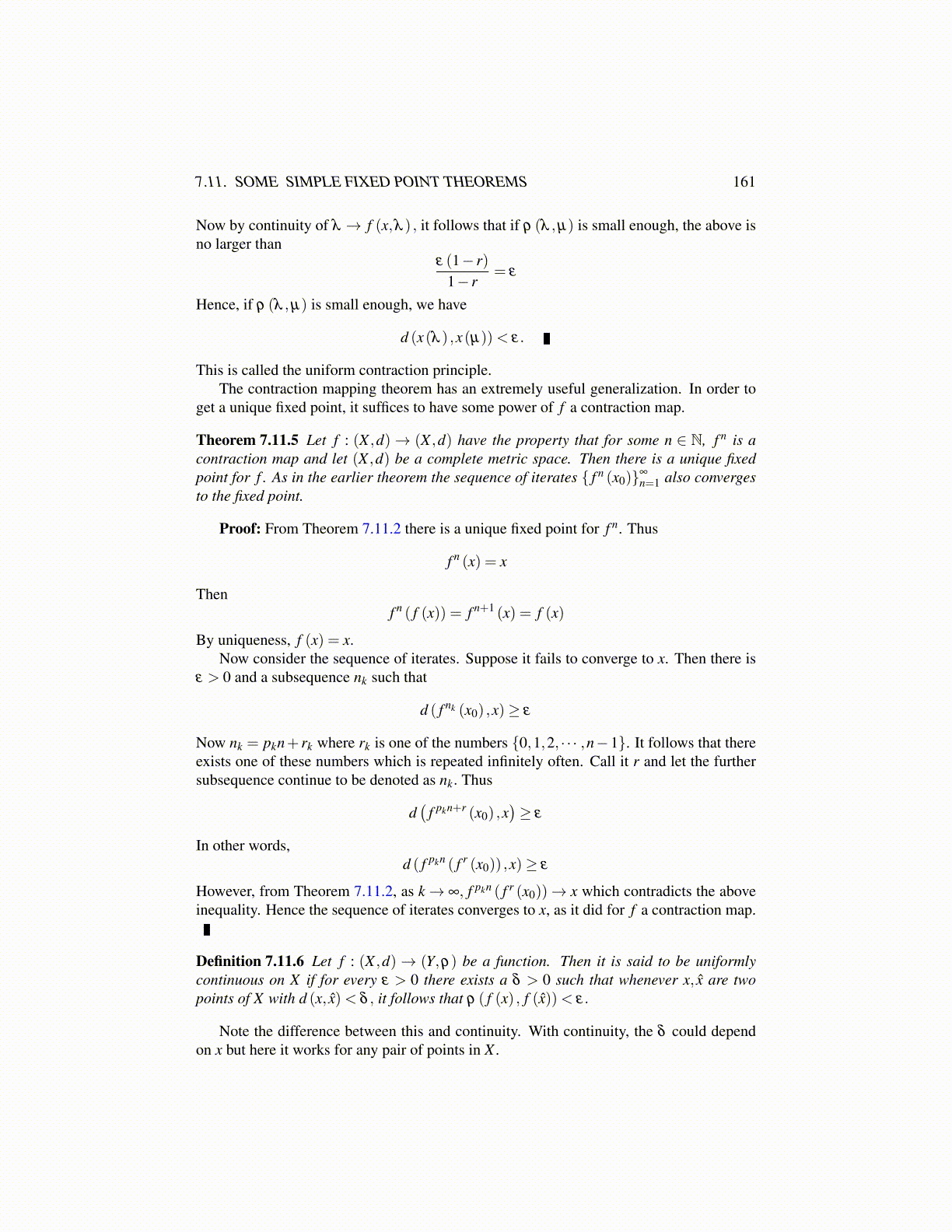
7.11. SOME SIMPLE FIXED POINT THEOREMS 161
Now by continuity of λ → f (x,λ ) , it follows that if ρ (λ ,µ) is small enough, the above isno larger than
ε (1− r)1− r
= ε
Hence, if ρ (λ ,µ) is small enough, we have
d (x(λ ) ,x(µ))< ε.
This is called the uniform contraction principle.The contraction mapping theorem has an extremely useful generalization. In order to
get a unique fixed point, it suffices to have some power of f a contraction map.
Theorem 7.11.5 Let f : (X ,d)→ (X ,d) have the property that for some n ∈ N, f n is acontraction map and let (X ,d) be a complete metric space. Then there is a unique fixedpoint for f . As in the earlier theorem the sequence of iterates { f n (x0)}∞
n=1 also convergesto the fixed point.
Proof: From Theorem 7.11.2 there is a unique fixed point for f n. Thus
f n (x) = x
Thenf n ( f (x)) = f n+1 (x) = f (x)
By uniqueness, f (x) = x.Now consider the sequence of iterates. Suppose it fails to converge to x. Then there is
ε > 0 and a subsequence nk such that
d ( f nk (x0) ,x)≥ ε
Now nk = pkn+ rk where rk is one of the numbers {0,1,2, · · · ,n−1}. It follows that thereexists one of these numbers which is repeated infinitely often. Call it r and let the furthersubsequence continue to be denoted as nk. Thus
d(
f pkn+r (x0) ,x)≥ ε
In other words,d ( f pkn ( f r (x0)) ,x)≥ ε
However, from Theorem 7.11.2, as k→ ∞, f pkn ( f r (x0))→ x which contradicts the aboveinequality. Hence the sequence of iterates converges to x, as it did for f a contraction map.
Definition 7.11.6 Let f : (X ,d)→ (Y,ρ) be a function. Then it is said to be uniformlycontinuous on X if for every ε > 0 there exists a δ > 0 such that whenever x, x̂ are twopoints of X with d (x, x̂)< δ , it follows that ρ ( f (x) , f (x̂))< ε.
Note the difference between this and continuity. With continuity, the δ could dependon x but here it works for any pair of points in X .